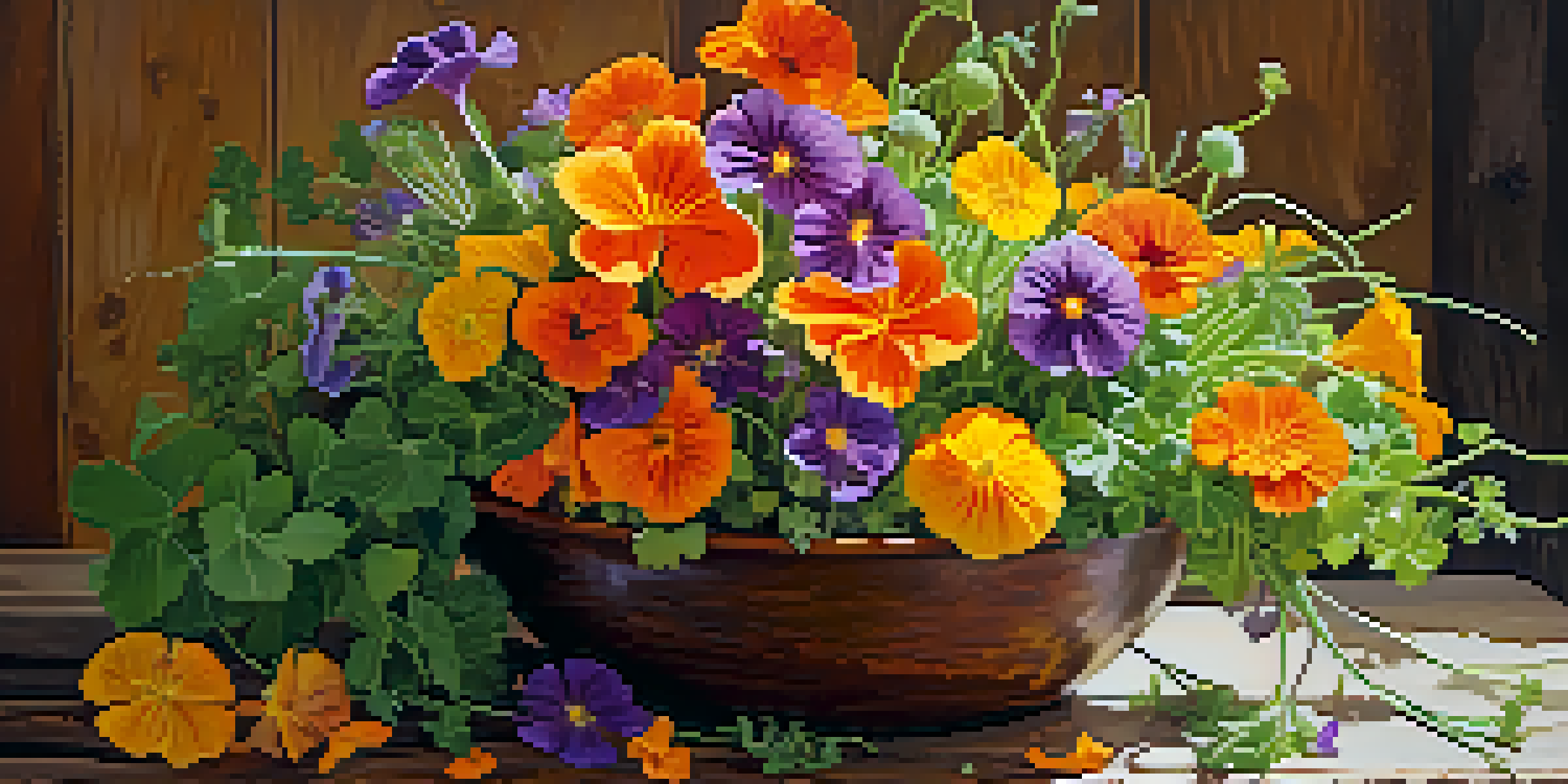Top 10 Edible Flowers to Enhance Your Vegetarian Meals

Introduction to Edible Flowers in Cooking
Edible flowers have been a part of culinary traditions across the globe for centuries. They add color, flavor, and a unique twist to vegetarian dishes, making meals not just food, but an experience. Incorporating these blooms into your diet is an easy way to elevate your cooking and impress your guests.
Nasturtiums: The Spicy Delight
Nasturtiums are vibrant flowers that come in shades of orange, yellow, and red, bringing a peppery kick to your dishes. They are not just beautiful; their leaves and flowers are rich in Vitamin C and antioxidants. Toss them into salads or use them as a garnish to add both flavor and visual appeal.
Edible Flowers Enhance Dishes
Incorporating edible flowers into your meals adds color, flavor, and a unique experience.
Chive Blossoms: A Subtle Onion Flavor
Chive blossoms are delicate purple flowers that pack a mild onion flavor, making them a perfect addition to various dishes. They can be sprinkled over salads or used as an aromatic garnish for soups. Not only do they taste great, but they also provide a beautiful pop of color.
Calendula: The Sunshine Flower
Calendula, often referred to as marigold, boasts bright yellow and orange petals that can brighten up any plate. Their slightly spicy and tangy flavor adds a unique twist to salads and rice dishes. Additionally, calendula is known for its medicinal properties, making it a healthy choice for your meals.
Variety of Flavors to Explore
From the peppery taste of nasturtiums to the subtle sweetness of squash blossoms, there's a flower for every dish.
Lavender: A Floral Aroma
Lavender is not just for sachets and potpourri; its fragrant flowers can enhance both sweet and savory dishes. Use lavender in desserts, teas, or even infused oils for a unique flavor profile. Just be cautious with the amount, as it can easily overpower other flavors.
Hibiscus: The Tart and Tangy Bloom
Hibiscus flowers are known for their vibrant red color and tangy flavor, often used in teas and beverages. They can also be incorporated into salads or as a garnish for desserts, giving your dishes a tropical flair. Plus, hibiscus is packed with antioxidants, making it a healthful addition.
Healthy and Aesthetic Choices
Many edible flowers not only beautify your meals but also offer health benefits, making them a smart addition to your diet.
Squash Blossoms: A Summer Treat
Squash blossoms are delicate, trumpet-shaped flowers that have a subtle, sweet flavor. They can be stuffed with cheese, battered, and fried or simply sautéed with garlic. Their seasonal availability makes them a true delicacy in summer, and they can elevate any dish with their unique taste.
Roses: A Romantic Touch
Roses are not just for bouquets; their petals can be used in cooking to add a floral note to dishes. The flavor varies from sweet to tart, depending on the variety, making them versatile for both savory and sweet recipes. Use rose petals to decorate cakes or infuse syrups for a romantic touch.
Conclusion: Embrace Edible Flowers in Your Kitchen
Adding edible flowers to your vegetarian meals not only enhances their aesthetic appeal but also elevates the flavor profiles. With a variety of blooms to choose from, there’s something to complement every dish. So why not experiment with these delightful flowers and impress your taste buds?